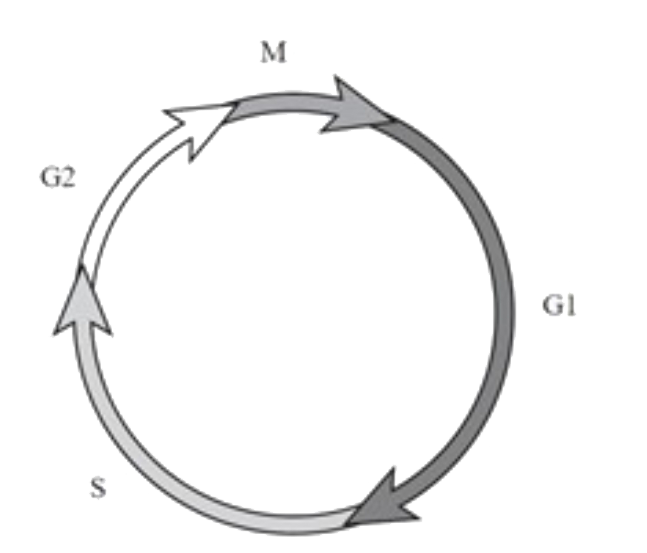A typical eukaryotic cell cycle is illustrated by
yeast
Bacteria
Human cells in culture
Both A and C
The correct Answer is:C
To answer the question "A typical eukaryotic cell cycle is illustrated by," we will analyze the options provided and determine which one correctly represents a typical eukaryotic cell cycle.
1. Understanding Eukaryotic Cells:
- Eukaryotic cells have a complex structure with a defined nucleus and organelles. They undergo a cell cycle that includes phases of growth and division.
2. Identifying the Options:
- The options provided include:
- A: Yeast
- B: Bacteria
- C: Human cell in culture
3. Analyzing Each Option:
- Option A (Yeast):
- Yeast is a eukaryotic organism, but it is unicellular. Yeast reproduces through budding or fission, which may not represent the typical cell cycle as seen in multicellular organisms.
- Option B (Bacteria):
- Bacteria are prokaryotic organisms and do not undergo a eukaryotic cell cycle. They reproduce through binary fission, which is not relevant to the eukaryotic cell cycle.
- Option C (Human cell in culture):
- Human cells are eukaryotic and can be cultured in vitro. They undergo a typical cell cycle that includes interphase (growth phase) and mitosis (division phase). This option accurately represents the eukaryotic cell cycle.
4. Conclusion:
- The correct answer is Option C: Human cell in culture. This option illustrates a typical eukaryotic cell cycle.
Final Answer:
A typical eukaryotic cell cycle is illustrated by Option C: Human cell in culture.
---
- Eukaryotic cells have a complex structure with a defined nucleus and organelles. They undergo a cell cycle that includes phases of growth and division.
- The options provided include:
- A: Yeast
- B: Bacteria
- C: Human cell in culture
- Option A (Yeast):
- Yeast is a eukaryotic organism, but it is unicellular. Yeast reproduces through budding or fission, which may not represent the typical cell cycle as seen in multicellular organisms.
- Option B (Bacteria):
- Bacteria are prokaryotic organisms and do not undergo a eukaryotic cell cycle. They reproduce through binary fission, which is not relevant to the eukaryotic cell cycle.
- Option C (Human cell in culture):
- Human cells are eukaryotic and can be cultured in vitro. They undergo a typical cell cycle that includes interphase (growth phase) and mitosis (division phase). This option accurately represents the eukaryotic cell cycle.
- The correct answer is Option C: Human cell in culture. This option illustrates a typical eukaryotic cell cycle.
A typical eukaryotic cell cycle is illustrated by Option C: Human cell in culture.
Topper's Solved these Questions
- CELL CYCLE AND CELL DIVISIONBOOK - A2ZCHAPTER - CELL CYCLE AND CELL DIVISIONEXERCISE - Section A : Topicwise Questions Topic 2 : Mitosis
30 Videos
- CELL CYCLE AND CELL DIVISIONBOOK - A2ZCHAPTER - CELL CYCLE AND CELL DIVISIONEXERCISE - Section A : Topicwise Questions Topic 3: Meiosis
31 Videos
- BREATHING AND EXCHANGE OF GASESBOOK - A2ZCHAPTER - BREATHING AND EXCHANGE OF GASESEXERCISE - Section D: Chapter-end Test
50 Videos
- CELL: THE UNIT OF LIFEBOOK - A2ZCHAPTER - CELL: THE UNIT OF LIFEEXERCISE - Section D Chapter-end Test
50 Videos
Similar Questions
Knowledge Check
A eukaryotic cell has
ASingle chromatin fiberBDefinite nucleusCIncipient nucleusDNone of theseA typical eukaryotic cell consists of :-
ACell membraneBNucleusCCytoplasmDAll of the aboveIn a typical eukaryotic cell cycle, Gap-I synthesis and Gap-2 are those phases included in the
AProphaseBMetaphaseCAnaphaseDInterphase
Eukaryotic cell posses
View SolutionAll of the following statements are true for the typical eukaryotic cell cycle EXCEPT:
View SolutionNucleolus in Eukaryotic cell is
View SolutionG_(0) state of cells in eukaryotic cell cycle denotes
View SolutionThe eukaryotic cell cycle is controlled at several points, which of these statements is not true?
View Solution

